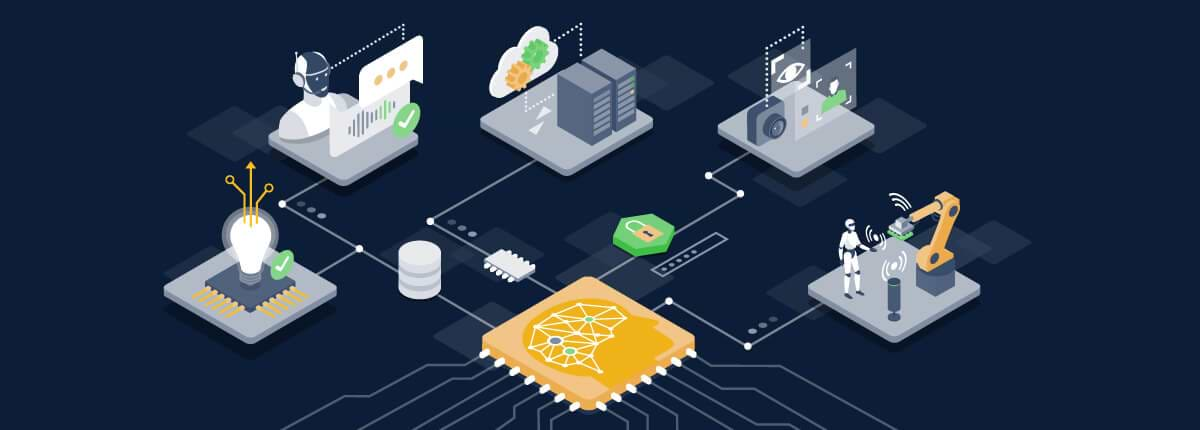What is Cloud Automation?
Moving workloads to the cloud is a great way to add flexibility and scalability to your IT strategy.
In order to unlock the full potential of the cloud, however, it’s important to automate cloud administration. That’s where cloud automation comes in. By minimizing the time IT and DevOps teams spend provisioning, deploying and monitoring cloud workloads manually, cloud automation helps businesses use the cloud to its fullest effect.
Cloud automation, defined
Cloud automation is the use of tools and methodologies that eliminate or reduce the amount of manual effort required to manage cloud environments.
All cloud platforms (such as AWS, Azure and GCP) provide a variety of tools that engineers can use to configure cloud environments by hand. You can log into a web console or run commands in a CLI to deploy a virtual machine instance, configure a storage bucket and so on. But if you need to perform tasks like these at scale, a manual approach becomes unfeasible.
Cloud automation solves this challenge by making it possible to perform cloud setup, deployment and monitoring work automatically.
Why is cloud automation important?
The value of cloud automation extends beyond simply reducing the amount of manual work that engineers have to perform. It provides a variety of benefits:
- Speed: Perhaps most obvious, cloud automation helps teams complete tasks faster. When you can deploy a dozen containers or provision identities for a hundred users in just a few clicks, you significantly reduce the time it takes to get cloud workloads up and running, or to modify existing environments.
- Efficiency: Likewise, automation in the cloud helps teams do work efficiently. In turn, it enables them to do more with less time and fewer engineers.
- Scalability: As noted above, cloud automation plays a central role in enabling scalability. While cloud platforms offer access to virtually unlimited volumes of resources, actually provisioning and managing those resources in order to scale is impossible without the help of cloud automation.
- Fewer errors: Automation reduces the risk that humans may accidentally apply the wrong configuration or fail to adhere to protocol when managing a cloud environment. As a result, cloud automation helps reduce errors, such as misconfigured access control rules or the selection of the wrong VM instance type.
Ways to automate your cloud
A variety of tools and strategies are available to implement cloud automation. They fall into distinct categories, each of which addresses a different facet of cloud environments.
Infrastructure-as-Code
Within a cloud environment, Infrastructure-as-Code, or IaC, is the use of automation tools that define how cloud infrastructure (such as virtual machines or storage) should be configured, then apply the configuration automatically. IaC tools are powered by code-based configuration files, which engineers write to match the desired state of their cloud.
All of the major public cloud vendors offer native IaC tools, such as Azure Resource Management and AWS CloudFormation. You can also find third-party IaC platforms that work on any cloud, like Terraform and Ansible.
IAM automation
IAM rules define which users can perform which actions or access which resources in your cloud environment.
Manually setting up IAM rules for each user and resource who accesses your cloud would take quite a long time. By taking advantage of cloud automation tools, teams can automate much of this process by, for instance, using templates and deployment tools that can set up IAM rules automatically.
Public cloud platforms offer some tools to help with IAM automation; for instance, you can automate IAM policy creation in AWS using CloudFormation and CodePipeline, both of which are AWS services. Third-party vendors also offer IAM management tools that can automate policy creation and deployment.
Deployment automation
If you deploy new versions of an application to your cloud environment many times per week, or even multiple times per day, you’ll benefit from cloud automation tools that move new releases into your production environment for you. Services like AWS CodeDeploy can do this. Most PaaS platforms can also automatically deploy to any cloud environment, and some Integrated Development Environment (IDE) tools offer plugins (like the AWS Toolkit for Eclipse) that automate deployment of new builds to the cloud.
Container orchestration
Unless you are deploying just a few containers, starting, updating and restarting them quickly becomes an unmanageable task without the help of automation tools. Platforms like Kubernetes, which can run both in the cloud and on-premises, solve this problem by orchestrating containers, which means managing them automatically.
Artifact management automation
When you maintain a complex DevOps delivery pipeline, you typically end up with many software artifacts, meaning application images, containers, configuration files or other objects that are generated as part of the software delivery process.
Platforms like JFrog Artifactory help automate the task of keeping track of all of these artifacts. They simplify critical management tasks such as applying the right access controls to each artifact in order to keep artifacts secure and ensuring reliable access to artifacts, at any scale.
Get the most out of DevOps with cloud automation
DevOps is all about moving fast, scaling seamlessly and improving continuously. Cloud automation helps businesses achieve these goals by allowing engineers to perform basic administration tasks automatically, which adds speed, consistency, and accuracy.



